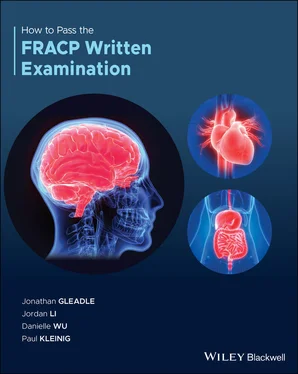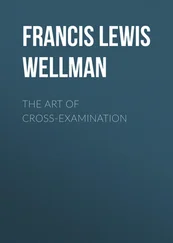Patient factors predictive of higher risk for anthracycline cardiomyopathy include lifetime cumulative dose, age less than 18 or over 65, female gender, renal failure, radiotherapy involving the heart, pre‐existing cardiac disease, carbonyl reductase gene polymorphisms, and carrier status for haemochromatosis genes. Exposure to anthracycline chemotherapy also increases risk of cardiotoxicity with trastuzumab. Trials evaluating the pharmaceutical prevention of anthracycline related cardiomyopathy have found small but statistically significant differences in deterioration of left ventricular function for ACE inhibitors, beta‐blockers, aldosterone antagonists and angiotensin 2 receptor blockers in predominantly low‐exposure and low‐risk patients. These results may or may not be clinically significant.
Trials that target those at highest risk of cardiomyopathy are most likely to yield more meaningful clinical results. For example, in one trial patients receiving high dose chemotherapy were randomised to receive placebo or ramipril should they have a troponin rise after their first cycle of chemotherapy. The results of the study found that the treatment arm had a roughly stable left ventricular ejection fraction over the trial period, but the placebo arm decreased by around 14%, which could translate to meaningful patient‐centred outcomes. Dexrazoxane competitively binds Top 2β, preventing anthracycline binding, and very effectively prevents anthracycline cardiomyopathy. Previous concerns regarding increased risk of secondary cancers with dexrazoxane are being re‐evaluated as the result of multiple influential trials, and it is now available for use in a number of settings.

Henriksen P. Anthracycline cardiotoxicity: an update on mechanisms, monitoring and prevention. Heart. 2017;104(12):971–977.
https://heart.bmj.com/content/104/12/971.long
4. Answer: B
Most patients with symptomatic severe aortic stenosis (AS) have a valve area <1.0 cm 2and/or a mean transvalvular pressure gradient >40 mmHg. Low gradient AS is defined as severe AS (valve area <1.0 cm 2) with a transvalvular pressure gradient <30 mmHg. Low gradient AS is seen in patients with left ventricular (LV) systolic dysfunction with reduced left ventricular ejection fraction (LVEF). A challenging clinical task in those with low gradient AS is differentiating who will survive and improve after aortic valve replacement surgery and those who will not. There is a subset of patients with AS and low transvalvular gradients who do not benefit from aortic valve replacement and are at considerable risk of operative death. These patients have a significant degree of LV dysfunction but only mild to moderate AS. They are considered to have pseudo‐stenosis because their symptoms are primarily due to poor LV function, not significant valvular disease.
Dobutamine Stress Echocardiography (DSE) is useful to differentiate true aortic stenosis from pseudo‐aortic stenosis. Patients with severe AS and secondary LV dysfunction that leads to a low transvalvular pressure gradient are considered to have true stenosis. In this setting, the severe stenotic lesion results in excessive afterload and a reduced LVEF, thereby producing both a markedly decreased stroke volume and low transvalvular pressure gradient. It is logical to assume that aortic valve replacement will be beneficial in these patients. In pseudostenosis, patients have a low transvalvular pressure gradient because of the combination of moderate AS and low cardiac output. The low output reduces the valve opening forces, resulting in limited mobility of a valve that is not severely diseased. The calculated valve area may mistakenly suggest severe stenosis because of valve area equation limitations when applied to low flow rate conditions. In contrast to true stenosis, surgical correction in these patients is unlikely to be beneficial.
There are no other clinical or haemodynamic variables that are helpful to stratify risk in such patients and determine the appropriate therapy. The aortic valve calcium score (determined by CT) has been associated with AS haemodynamic severity, progression rate, and clinical outcomes but not validated in patients with low ejection fraction. Patients with contractile reserve have a much better outcome after surgery.

Annabi M, Touboul E, Dahou A, et al. Dobutamine Stress Echocardiography for Management of Low‐Flow, Low‐Gradient Aortic Stenosis. Journal of the American College of Cardiology. 2018;71(5):475–485. https://www.sciencedirect.com/science/article/pii/S0735109717417785?via%3Dihub
5. Answer: D
There is an increased prevalence of AS in an ageing population. Severe AS is defined on transthoracic echocardiogram as a reduced aortic valve area (AVA) of < 1.0 cm 2, peak velocity of > 4 m/s and a mean gradient of greater than 40 mmHg across the valve. Patients with less severe aortic stenosis may remain asymptomatic for years. Once the symptoms of syncope, angina, or heart failure develop, average survival reduces rapidly, with an increased risk of sudden cardiac death. Until transcatheter aortic valve implantation (TAVI) became available, the options to treat severe AS include medical (palliative management), surgical aortic valve replacement (SAVR), or a Ross procedure (where a diseased aortic valve is replaced by a patient's own pulmonary valve). SAVR involves a midline sternotomy, general anaesthetic, cardiopulmonary bypass, typically requires 24 to 48 hours stay in an intensive care unit (ICU) and 10 to 14 days as an inpatient for post‐op recovery and mobilisation, and an even longer hospital stay for rehabilitation in the frail and elderly. Patients who are greater than 75 years old have an increased morbidity and mortality associated with SAVR.
Since the advent of TAVI in 2002, elderly patients who were not suitable candidates for SAVR, can now be considered for TAVI if appropriate, provided they do not have severe COPD, debilitating stroke, active malignancy, and dementia indicating a survival of < 1 year.
The majority of TAVI procedures are performed with local anaesthetic and conscious sedation. In uncomplicated TAVI cases, patients can be mobilised 4 hours post‐procedure and do not require ICU admission and likely to be discharged within 48 hours after telemetry monitoring to rule out conduction disturbance. Patients usually require dual‐antiplatelets (aspirin and clopidogrel) for at least 3–6 months, with aspirin continued lifelong.

Adams H, Ashokkumar S, Newcomb A, et al. Contemporary review of severe aortic stenosis. Internal Medicine Journal. 2019;49(3):297–305.
https://www.ncbi.nlm.nih.gov/pubmed/30091235
6. Answer: D
A randomised non‐inferiority trial was terminated early due to safety concerns around the combination of rivaroxaban and anti‐platelets in patients with coronary artery disease (CAD) and intervention (percutaneous coronary intervention or bypass grafting) more than one‐year prior – or medically treated CAD. The primary efficacy measure of cardiovascular events or death from any cause was significantly lower in patients taking rivaroxaban alone compared to rivaroxaban plus aspirin. Bleeding was significantly lower in the monotherapy group, and the secondary outcome measure of death from any cause was significantly lower in the monotherapy group.
Читать дальше















